Trachelius subtilis (Penard, 1922)
Most likely ID: n.a.
Synonym: n.a.
Sampling location: Simmelried
Phylogenetic tree: n.a.
Diagnosis:
- body oval to ellipsoid with short proboscis
- inconspicuous ventral groove
- length 150–280 µm
- cytoplasm strongly vacuolated
- cytostome circular at the base of proboscis
- two globular or oval macronuclei with a spherical micronucleus in between
- many scattered contracile vacuoles
- pellicle with fringe of rod-shaped extrusomes, about 1 µm long
- brownish colored excretion vacuoles
- feeding mainly on rotifers
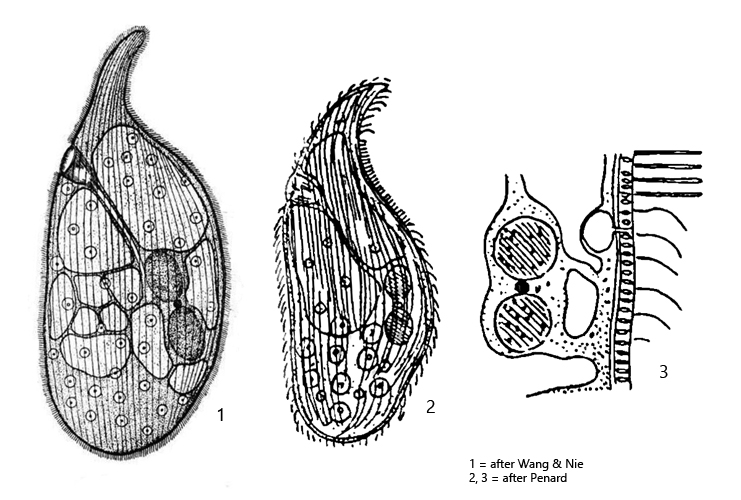
I find Trachelius subtilis comparatively rarely and so far exclusively in the Simmelried. There I found Trachelius subtilis in decomposing plant material in June 2021 and August 2022.
Trachelius subtilis was first described by Penard (1922). The species is smaller than Trachelius ovum and its main characteristic is a two-part macronucleus with a spherical micronucleus in the middle (s. figs. 2 and 3, above). In 2012 Vďačný & Foissner synonymized Trachelius subtilis with Trachelius ovum with the argument that Penard (1922) possibly only found specimens of Trachelius ovum with a macronucleus constricted in the middle and that this is an observational error. Vďačný & Foissner obviously did not find any specimens with such a constricted macronucleus themselves. However, Penard was a very precise observer and Kahl (1935) also found specimens of Trachelius subtilis, which confirmed and supplemented Penard’s results.
I cannot agree with the synonymization with Trachelius ovum by Vďačný & Foissner, because I could often observe Trachelius ovum and the specimens of Trachelius subtilis I found definitely had other characteristics. Rather, I can confirm the descriptions of Penard and Kahl, especially with regard to the nuclear apparatus of Trachelius subtilis. Since I found several specimens of Trachelius subtilis, I was also able to prove that the characteristics are constant.
The specimens of my population of Trachelius subtilis were 190–240 µm long and thus smaller than Trachelius ovum (250–400 µm). The specimens were also more slender than Trachelius ovum. The proposcis was short and bent backwards (s. fig. 2 a). The very large food vacuoles mainly contained rotifers, which was also described by Kahl (s. fig. 1 a). In all specimens I examined, the macronucleus consisted of two broadly oval parts with a length of about 12–15 µm, between which was a spherical micronucleus with a diameter of about 2–3 µm (s. figs. 4 a and 5). The two macronuclei were definitely separated. Thus they correspond exactly to the description and drawing by Penard (s. drawing 3, above). The oral bulge was circular and had a diameter of 8–10 µm (s. fig. 6). In some specimens a large number of brownish colored excretory vacuoles were found in the cytoplasm, which are also described by Kahl (s. fig. 3). In the pellicle a fringe of rod-shaped extrusomes is located with a length of about 1 µm (s. fig. 7). I could not find longer extrusomes in the cytoplasm. There are numerous contractile vacuoles scattered over the body under the pellicle (s. fig. 4 b).
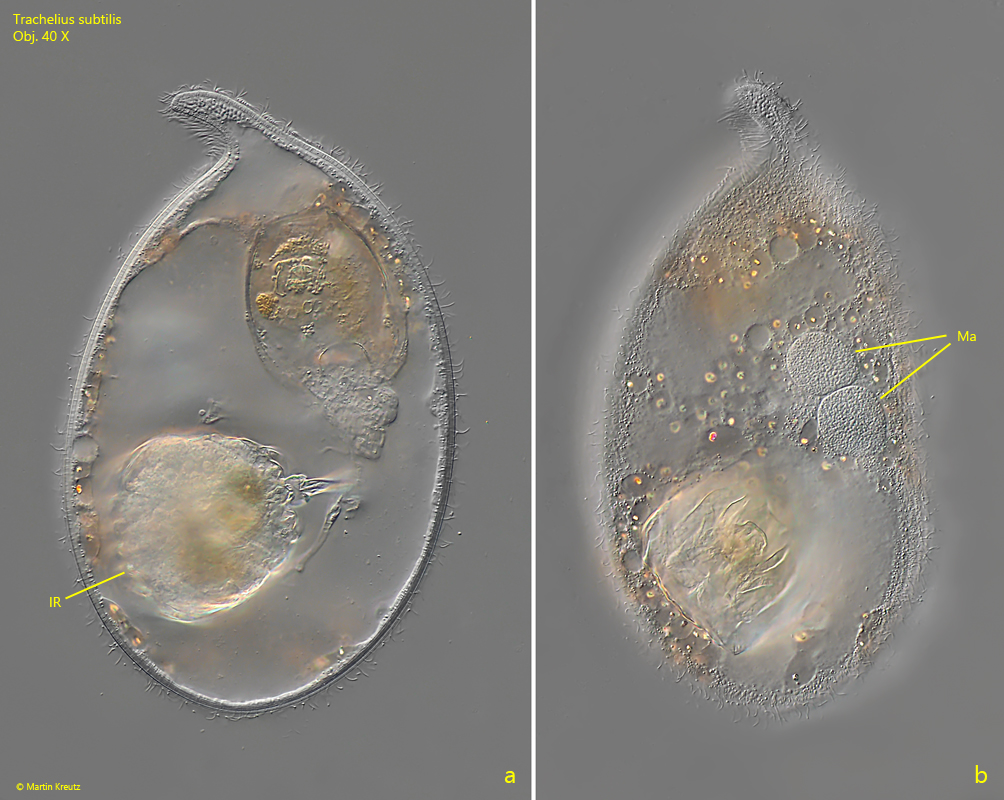
Fig. 1 a-b: Trachelius subtilis. L = 230 µm. A freely swimming specimen. IR = ingested rotifer, Ma = macronucleus consisting of two parts. Obj. 40 X.
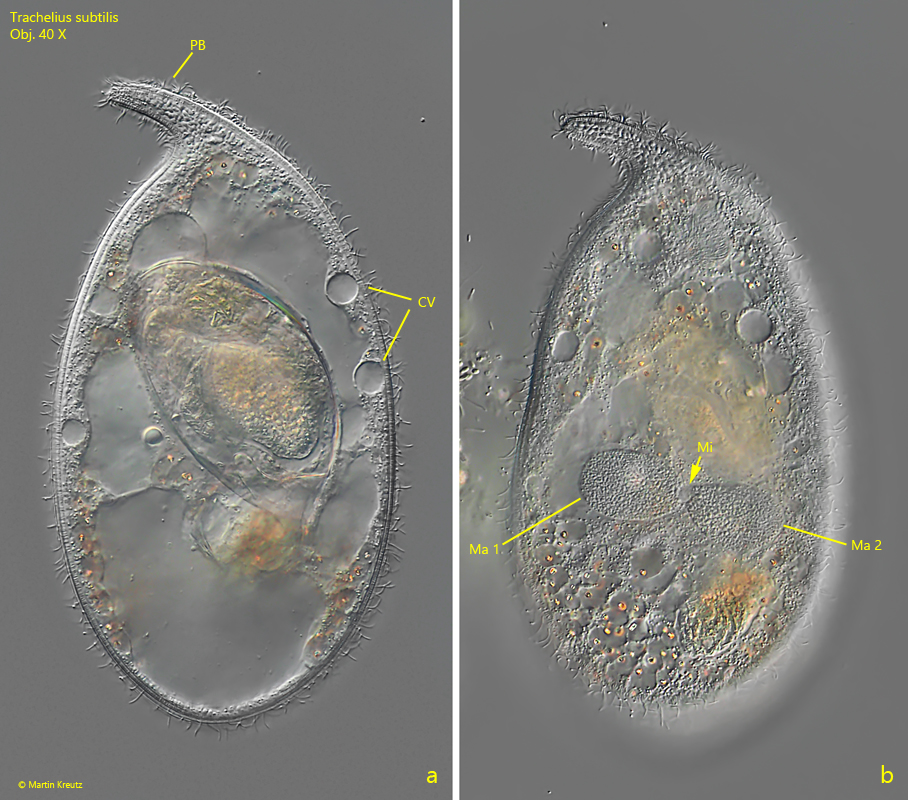
Fig. 2 a-b: Trachelius subtilis. L = 218 µm. A second freely swimming specimen. Note the two oval macronuclei (Ma 1, Ma 2) with the spherical micronucleus (Mi) in between. CV = contractile vacuoles, PB = proboscis. Obj. 40 X.
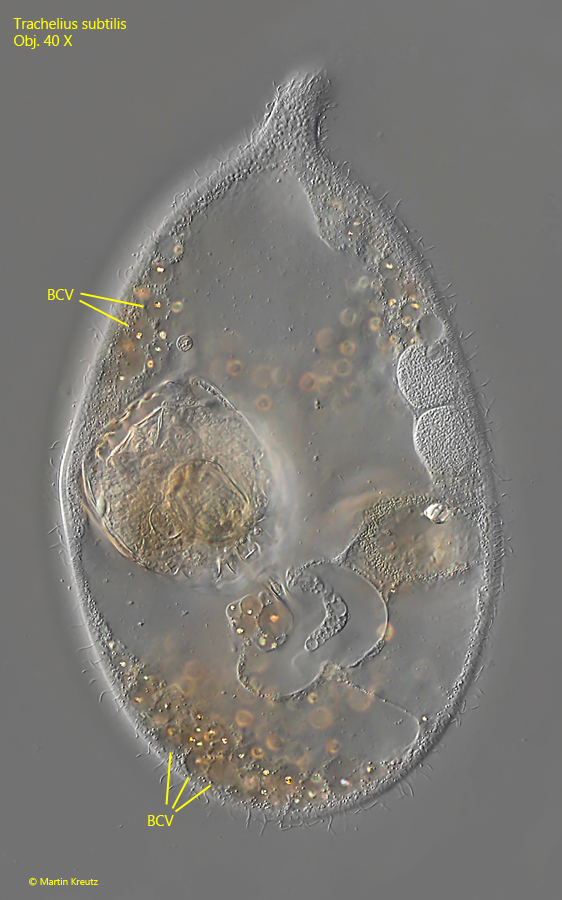
Fig. 3: Trachelius subtilis. The brownish colored excretion vacuoles (BCV) in the slightly squashed specimen as shown in fig. 1 a-b. Obj. 60 X.
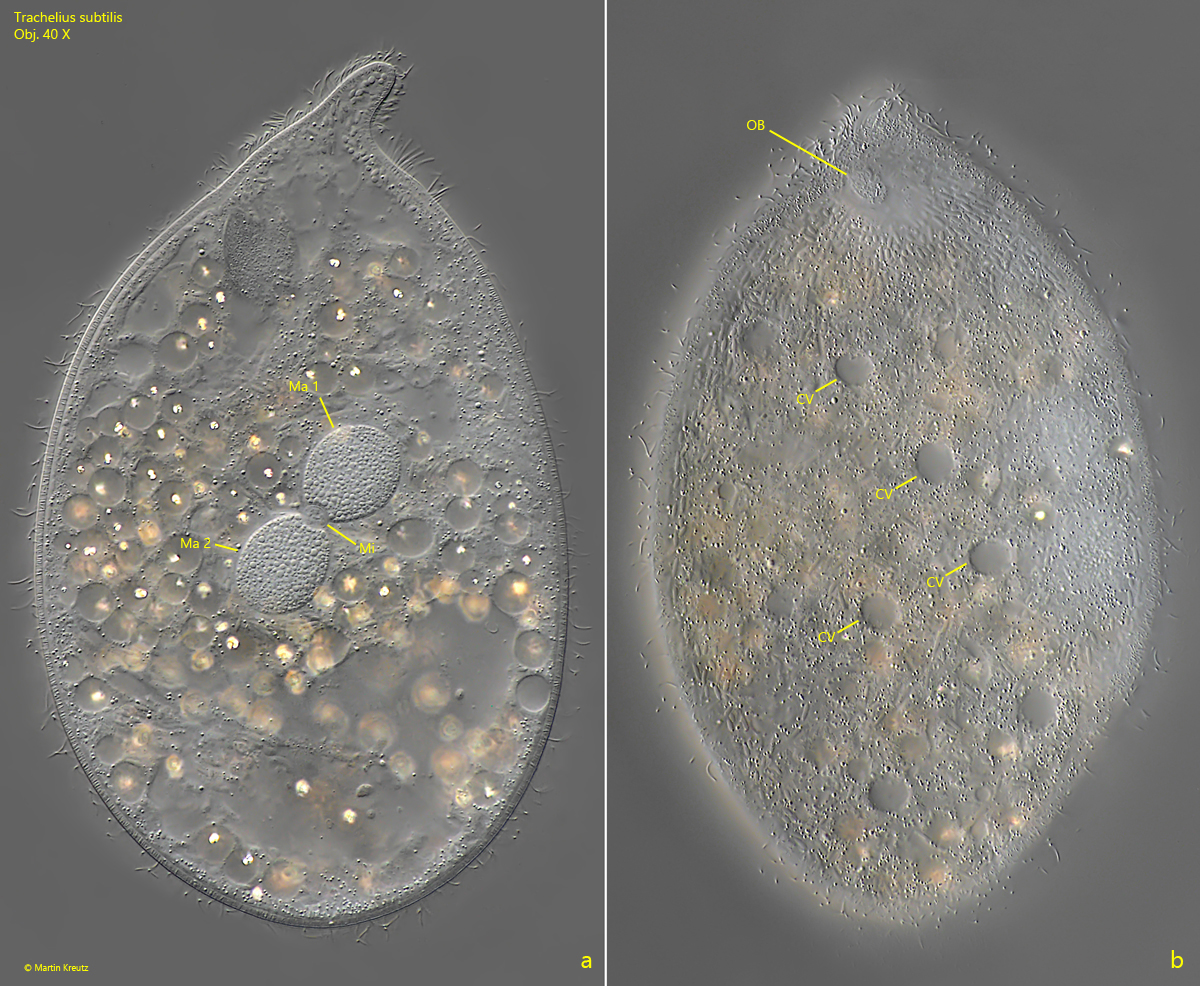
Fig. 4 a-b: Trachelius subtilis. L = 200 µm. Two focal planes of a slightly squashed specimen. CV = contractile vacuole; Ma 1, Ma 2 =macronuclei; Mi = micronucleus; OB = oral bulge. Obj. 60 X.
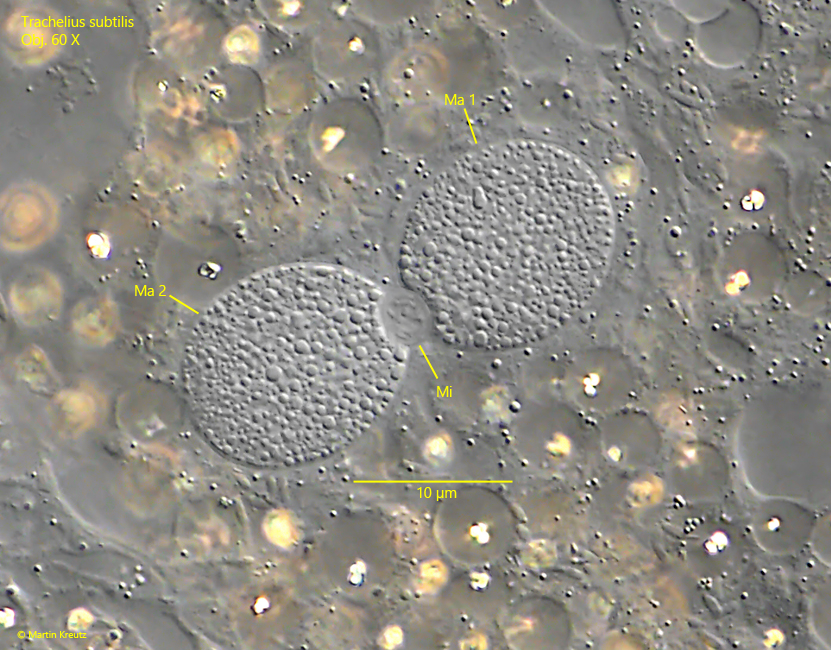
Fig. 5: Trachelius subtilis. The nuclear apparatus of the specimen as shown in fig. 3 a-b in detail. Ma 1, Ma 2 = macronuclei; Mi = micronucleus. Obj. 60 X.
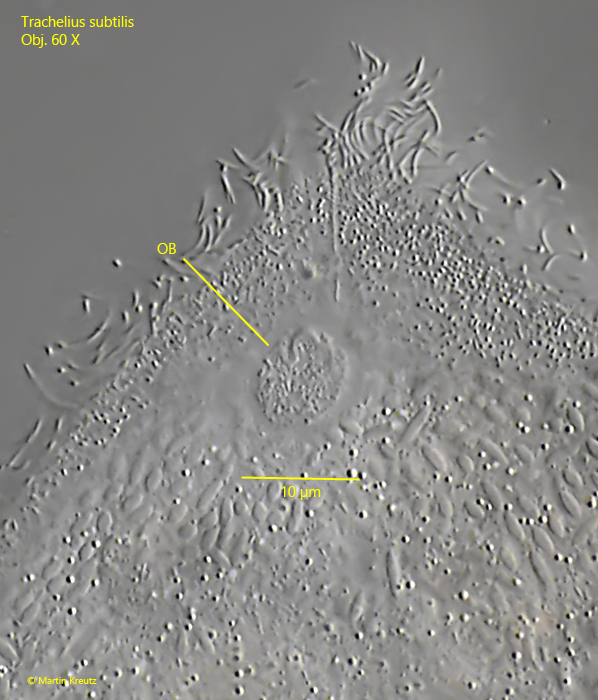
Fig. 6: Trachelius subtilis. The oral bulge (OB) of this specimen has a diameter of 8.5 µm. Obj. 60 X.
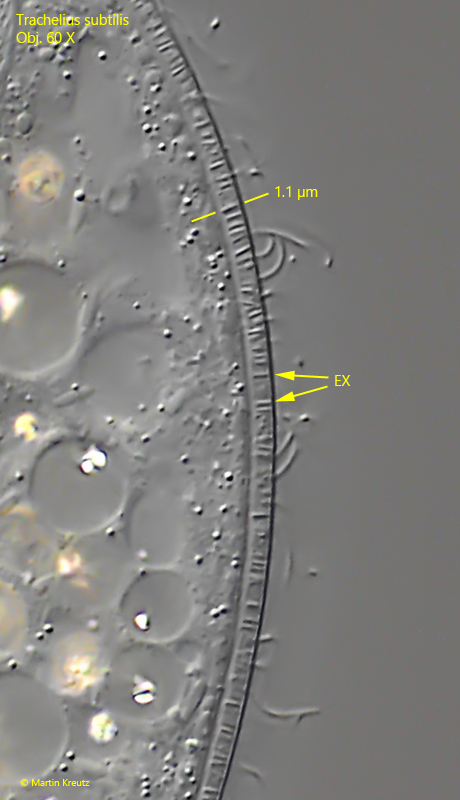
Fig. 7: Trachelius subtilis. Focal plane on the pellicle with a fringe of rod-shaped extrusomes (EX) with a length of about 1 µm. Obj. 60 X.
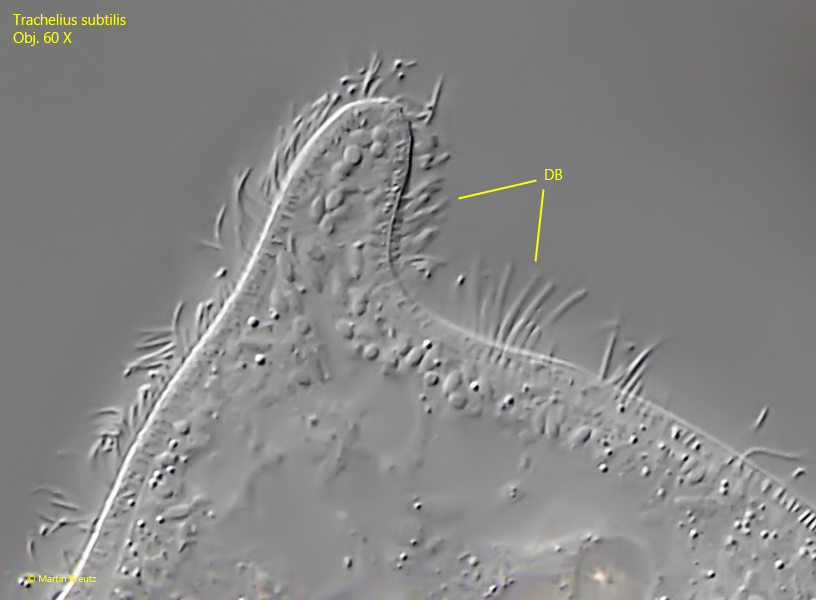
Fig. 8: Trachelius subtilis. The proboscis with a part of the dorsal brush (DB). Obj. 60 X.